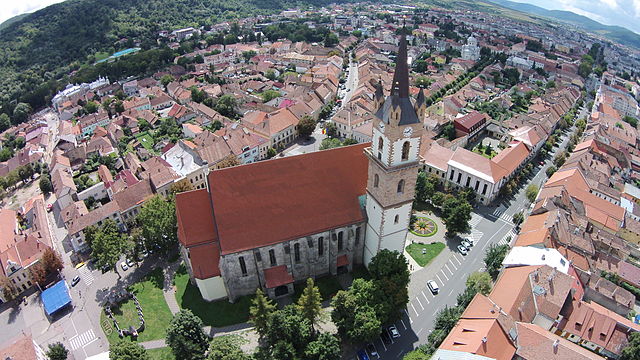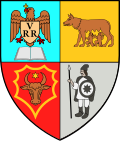Top Qs
Timeline
Chat
Perspective
Bistrița-Năsăud County
County of Romania From Wikipedia, the free encyclopedia
Remove ads
Bistrița-Năsăud (Romanian pronunciation: [ˈbistrit͡sa nəsəˈud] ⓘ) is a county (județ) of Romania, in Transylvania, with its capital city at Bistrița.
This article needs additional citations for verification. (September 2015) |
Remove ads
Name
In Hungarian, it is known as Beszterce-Naszód megye, and in German as Kreis Bistritz-Nassod. The name is identical with the county created in 1876, Beszterce-Naszód County (Romanian: Comitatul Bistrița-Năsăud) in the Kingdom of Hungary (the county was recreated in 1940 after the Second Vienna Award, as it became part of Hungary again until 1944). Except these, as part of Romania, until 1925 the former administrative organizations were kept when a new county system was introduced. Between 1925–1940 and 1945–1950, most of its territory belonged to the Năsăud County, with smaller parts belonging to the Mureș, Cluj, and Someș counties.
Remove ads
Geography
The county has a total area of 5,355 km2 (2,068 sq mi). One third of this surface represents the mountains from the Eastern Carpathians group: the Țibleș, Rodna, Bârgău, and Călimani Mountains. The rest of the territory represents the North-East side of the Transylvanian Plateau.
The main river crossing the county is the Someșul Mare. On the Bistrița River there is a big dam and a lake.
Neighbours
- Suceava County in the East.
- Cluj County in the West.
- Maramureș County in the North.
- Mureș County in the South.
Remove ads
Demographics
According to the 2021 census, the county had a population of 295,988 and the population density was 55.3/km2 (143.2/sq mi).[1]
Ethnic composition of Bistrița-Năsăud County (2021)
- Romanians (91.6%)
- Romani (4.11%)
- Hungarians (4.08%)
- Germans (Transylvanian Saxons) (0.10%)
- Others (0.18%)
Religious composition of Bistrița-Năsăud County (2021)
- Romanian Orthodox (82.5%)
- Pentecostals (9.04%)
- Reformed (3.50%)
- Greek Catholics (1.58%)
- Roman Catholics (0.88%)
- Baptists (0.68%)
- Others (1.44%)
- Irreligious,atheist and agnostic (0.42%)
Politics
The Bistrița-Năsăud County Council, renewed at the 2020 local elections, consists of 30 counsellors, with the following party composition:[3]
Remove ads
Administrative divisions




Bistrița-Năsăud County has 1 municipality, 3 towns, and 58 communes.
- Municipalities
- Bistrița – capital city; 78,877 (as of 2021)
- Towns
- Communes
- Bistrița Bârgăului
- Braniștea
- Budacu de Jos
- Budești
- Căianu Mic
- Cetate
- Chiochiș
- Chiuza
- Ciceu-Giurgești
- Ciceu-Mihăiești
- Coșbuc
- Dumitra
- Dumitrița
- Feldru
- Galații Bistriței
- Ilva Mare
- Ilva Mică
- Josenii Bârgăului
- Leșu
- Lechința
- Livezile
- Lunca Ilvei
- Maieru
- Matei
- Măgura Ilvei
- Mărișelu
- Miceștii de Câmpie
- Milaș
- Monor
- Negrilești
- Nimigea
- Nușeni
- Parva
- Petru Rareș
- Poiana Ilvei
- Prundu Bârgăului
- Rebra
- Rebrișoara
- Rodna
- Romuli
- Runcu Salvei
- Salva
- Sânmihaiu de Câmpie
- Șieu
- Șieu-Odorhei
- Șieu-Măgheruș
- Șieuț
- Șintereag
- Silivașu de Câmpie
- Spermezeu
- Șanț
- Târlișua
- Teaca
- Telciu
- Tiha Bârgăului
- Uriu
- Urmeniș
- Zagra
Remove ads
People
Natives of the county include:
See also
- Former Beszterce-Naszód County of the Kingdom of Hungary
- The Via Transilvanica long-distance hiking and biking trail, which crosses the county
References
Wikiwand - on
Seamless Wikipedia browsing. On steroids.
Remove ads




